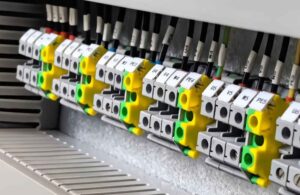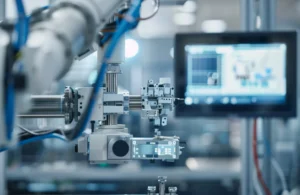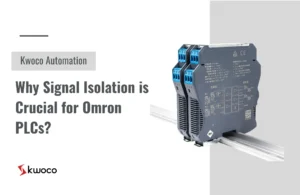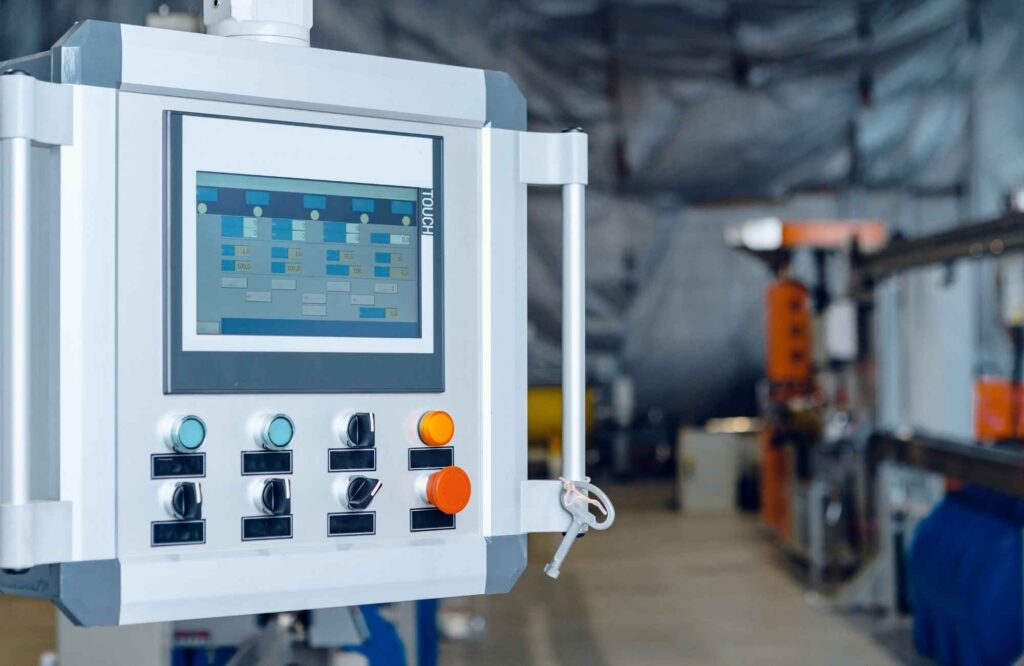Овладавање ПЛЦ панелима: Водич за читање дијаграма ожичења
Разумевање шта је ПЛЦ и како функционише је од суштинског значаја за ефикасно дијагностиковање кварова.
Садржај
Зашто ПЛЦ-ови отказују?
Кварови ПЛЦ-а могу настати због различитих фактора, укључујући кварове на хардверу, проблеме са софтвером и спољне утицаје.
Препознајући уобичајене разлоге за ПЛЦ кварови су кључни за одржавање интегритета система и минимизирање застоја. Удубљујући се у ове узроке, инжењери могу развити ефикасне стратегије за решавање проблема.
Уобичајени узроци кварова ПЛЦ-а
- Проблеми са напајањем: Недовољна снага или флуктуације могу довести до кварова у раду.
- Електрични шум: Сметње од оближње опреме могу пореметити ПЛЦ сигнале.
- Грешке модула: Појединачне компоненте унутар ПЛЦ-а могу отказати због хабања или оштећења.
- Грешке у конфигурацији: Нетачна подешавања могу довести до квара ПЛЦ-а или непредвидивог рада.
- Фактори животне средине: Екстремне температуре, влажност и прашина могу негативно утицати на перформансе ПЛЦ-а.
Проблеми са напајањем: велика брига
Кварови напајања су један од најчешћих узрока кварова ПЛЦ-а. Када ПЛЦ не добије одговарајућу снагу, може се неочекивано ресетовати или радити неправилно.
Симптоми проблема везаних за напајање укључују честа ресетовања и аларме. Редовна провера прикључака за напајање и коришћење извора непрекидног напајања (УПС) могу ублажити ове ризике.
Електрични шум и његови ефекти
Електрична бука, која може бити узрокована оближњим машинама, сметњама радио фреквенције или проблемима са уземљењем, може довести до кварова ПЛЦ-а. Симптоми укључују неправилне резултате и неочекивано понашање у контролном систему.
Примена одговарајућих техника уземљења и коришћење оклопљених каблова може помоћи у смањењу електричне буке и њеног утицаја на рад ПЛЦ-а.
Грешке модула: Шта тражити
Модули унутар ПЛЦ-а, као што су улазно/излазни (И/О) или комуникациони модули, могу покварити због различитих фактора. Уобичајени симптоми кварова модула укључују губитак комуникације и нереаговање на уносе.
Спровођење редовних инспекција и коришћење дијагностичких алата као што су мултиметри могу помоћи у идентификацији проблема везаних за модул пре него што доведу до значајних проблема.
Грешке у конфигурацији: Тихи убица
Грешке у конфигурацији, које се често занемарују, могу изазвати значајне проблеме унутар ПЛЦ система. Ове грешке могу настати због погрешног програмирања или подешавања унутар ПЛЦ софтвера.
Редовно прегледавање конфигурације ПЛЦ-а и коришћење контроле верзија може спречити проблеме који произилазе из погрешних конфигурација.
Фактори животне средине: Немојте их занемарити
Индустријска окружења могу бити изазовна за ПЛЦ-ове, са температурним флуктуацијама, влажношћу и прашином који представљају ризик за поузданост система.
Заштита ПЛЦ-ова кућиштима, обезбеђивање одговарајуће вентилације и спровођење процене животне средине су суштински кораци за ублажавање ових ризика.
Улога редовног одржавања
Редовно одржавање је од виталног значаја за спречавање кварова ПЛЦ-а. Кључни задаци укључују:
- Провера веза: Уверите се да су све везе безбедне може спречити повремене кварове.
- Чишћење: Одржавање ПЛЦ-а и његовог окружења чистим помаже у смањењу утицаја на животну средину.
- Ажурирање фирмвера: Редовна ажурирања могу побољшати перформансе и поправити познате проблеме.
Честа питања о кваровима ПЛЦ-а
Који су најчешћи симптоми квара ПЛЦ-а?
Најчешћи симптоми квара ПЛЦ-а укључују неправилне или неочекиване излазе, нереаговање на улазе, честа ресетовања система, грешке у комуникацији са повезаним уређајима и аларме који указују на грешке. Поред тога, корисници могу приметити необично понашање у аутоматизованим процесима, као што је недоследан рад или неочекивана заустављања.
Како могу да спречим да електрична бука утиче на мој ПЛЦ?
Да бисте спречили да електрична бука утиче на ваш ПЛЦ, размислите о примени следећих стратегија:
- Користите оклопљене каблове: Користите оклопљене каблове са упреденим парицама за пренос сигнала да бисте смањили електромагнетне сметње.
- Правилно уземљење: Уверите се да је сва опрема правилно уземљена како бисте смањили ефекте електричне буке.
- Држите каблове даље од извора буке: Водите каблове даље од тешких машина и високонапонских водова који могу генерисати електричну буку.
- Инсталирајте филтере: Користите филтере за буку на водовима напајања и сигналним линијама да бисте смањили сметње буке.
Шта да радим ако се мој ПЛЦ настави ресетовати?
Ако ваш ПЛЦ настави да се ресетује, следите ове кораке:
- Проверите напајање: Уверите се да је напајање стабилно и да обезбеђује исправан напон. Флуктуације могу изазвати ресетовање.
- Прегледајте везе: Потражите лабаве или оштећене везе, јер оне могу пореметити напајање и интегритет сигнала.
- Прегледајте програмску логику: Проверите да ли постоје програмске грешке које могу довести до неочекиваног ресетовања ПЛЦ-а.
- Испитајте услове околине: Уверите се да ПЛЦ ради у оквиру специфицираних температурних и влажних опсега. Прекомерна топлота или влага може довести до кварова.
Колико често треба да обављам одржавање на свом ПЛЦ систему?
Одржавање вашег ПЛЦ система треба да се обавља редовно, идеално сваких шест месеци до годину дана, у зависности од радног окружења и употребе. Међутим, одређени фактори, као што су накупљање прашине, екстремне температуре и учесталост употребе, могу захтевати чешће провере. Редовни задаци одржавања треба да обухватају проверу веза, чишћење система и ажурирање фирмвера како би се обезбедиле оптималне перформансе и поузданост.
Напајајте своје пројекте са потпуно новим, оригиналним Омрон, Митсубисхи, Сцхнеидер ПЛЦ – на лагеру, спремни одмах!
Закључак
Укратко, разумевање уобичајених узрока кварова ПЛЦ-а је кључно за одржавање оперативне ефикасности у индустријској аутоматизацији. Решавањем проблема са напајањем, минимизирањем електричне буке, спречавањем кварова модула и обезбеђивањем правилне конфигурације, можете значајно смањити ризик од кварова ПЛЦ-а.
Тражите нове, оригиналне ПЛЦ-ове за своје пројекте? У Квоцо-у имамо најновије ПЛЦ-ове врхунских брендова као што су Омрон, Митсубисхи, и Сцхнеидер. Купујте са поверењем — брза испорука, загарантован квалитет! Купи одмах
Контактирајте нас
Само попуните своје име, адресу е-поште и кратак опис вашег упита у овом обрасцу. Контактираћемо вас у року од 24 сата.
Ове теме могу такође бити интересантне

Контактор против релеја: Разумевање разлике између контактора и релеја
Овај чланак урања дубоко у свет контактора и релеја, две битне компоненте у индустријској аутоматизацији и системима управљања. Истражићемо њихове функционалности, разлике и апликације, помажући вам да разумете зашто су ове информације кључне за све који су укључени у фабрике машина и опреме, производњу или компаније за фабричка решења. Без обзира да ли желите да оптимизујете свој постојећи електрични систем или дизајнирате нови, разумевање нијанси између релеја и контактора може значајно да утиче на ефикасност, безбедност и исплативост.

6 најбољих ХМИ произвођача у индустријској аутоматизацији
6 најбољих ХМИ произвођача у индустријској аутоматизацији Као инжењер у Квоцо-у са дугогодишњим искуством у индустријској аутоматизацији

Зашто је изолација сигнала кључна за Омрон ПЛЦ-ове?
Зашто је изолација сигнала кључна за Омрон ПЛЦ-ове? У свету индустријске аутоматизације, сметње сигнала су тихи убица.







